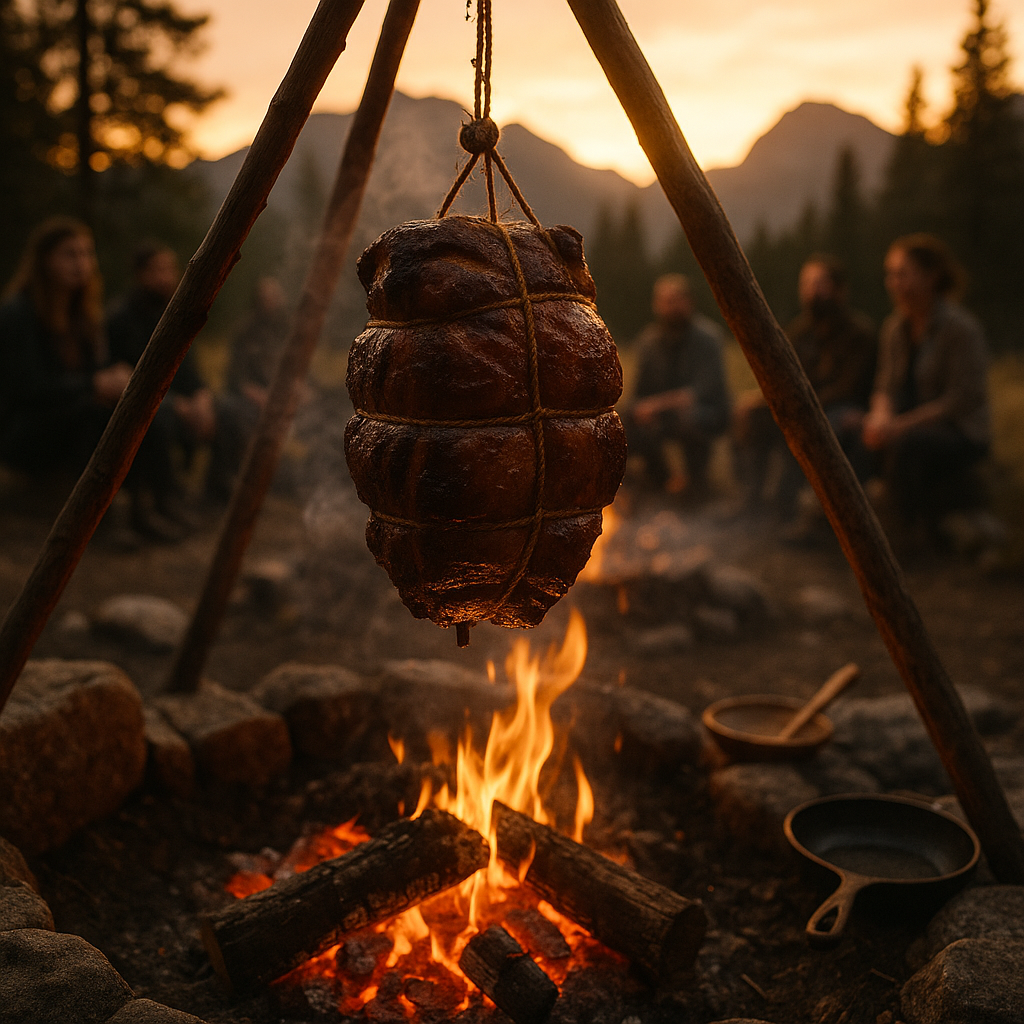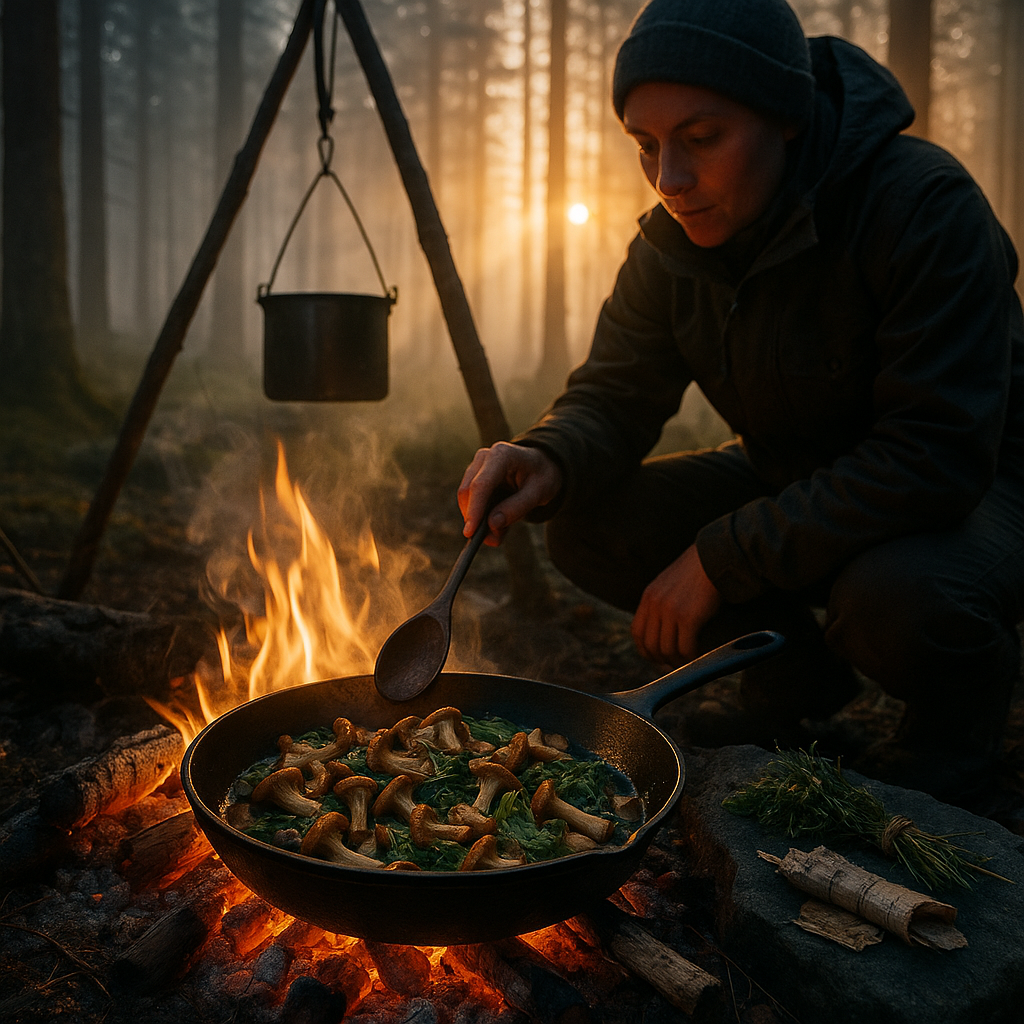Key Takeaways
- Wild leavening reconnects breadmaking with nature, blending ancient techniques such as ash-baking with the modern art of capturing wild yeast. This article uncovers the processes, benefits, and untapped potential of natural bread leavening, inspiring both tradition and innovation.
- Wild yeast offers remarkable flavor diversity. Beyond classic sourdough starters, wild yeasts collected from fruits or flowers introduce vibrant and nuanced flavors and often accelerate fermentation, opening new frontiers for artisanal breadmakers across all levels of expertise.
- Ash-baking enhances texture and preserves cultural heritage. This centuries-old method involves baking bread in environments heated with ash, infusing each loaf with a subtle smokiness and echoing the time-honored rituals of breadmaking communities worldwide.
- Natural fermentation is a scientific and sensory powerhouse. The unique partnership of wild yeasts and beneficial bacteria sparks carbon dioxide production, yielding beautifully risen loaves bursting with complex aromas and flavors.
- Wild leavening surpasses commercial yeast in both nutritional value and sustainability. By harnessing native microorganisms, bakers promote eco-friendly practices and create nutrient-rich breads, rooted in place and respectful of the environment.
- Simple techniques can bring wild yeast into any kitchen. Collecting and maintaining wild yeast is accessible through fermenting fruit peels or mixing flour and water, making ancient fermentation traditions available to today’s adventurous home baker.
- Ash is more than a rustic flourish; it brings functional, flavorful benefits. The alkaline properties support consistent rising and contribute to the bread’s delightfully crisp crust, while natural minerals fortify the dough and enhance overall quality.
- Blending past and present yields truly distinctive breads. Combining wild fermentation with traditional techniques like ash-baking showcases how thoughtful innovation can honor heritage, creating loaves that are as unique as the landscapes that inspire them.
Whether you are sourcing wild yeast in your backyard or perfecting the heat of your ash-bed, this article will help you navigate the intersection of history, science, and artistry in natural breadmaking. Dive into the world of wild leavening and rediscover bread as a living, breathing expression of adventure and place.
Introduction
Picture the glow of embers warming a dewy morning, the ashy fragrance dancing through crisp mountain air. Long before packaged yeast transformed kitchens, bread was shaped by wild forces, crackling fires, foraged wild yeasts, and the uncertain alchemy of nature. Wild leavening, rooted in ancient ash-baking and spontaneous fermentation, invites us not just to bake, but to participate in a ritual that celebrates bread’s wild origins and infinite potential.
This union of time-tested methods and lively curiosity is more than a nod to the past; it is an invitation to rediscover flavors and textures unattainable through commercial shortcuts. Wild yeast gathered from local fruits or blooms does more than ferment. It infuses bread with a sense of place and moment. Meanwhile, the ancient art of ash-baking yields loaves with crackling crust, unexpected complexity, and a whisper of smoke, preserving traditions carved by generations.
Let’s venture beyond predictable recipes to uncover how wild leavening and traditional baking are reshaping what it means to break and bake truly artisanal bread.
Stay Sharp. Stay Ahead.
Join our Telegram Channel for exclusive content, real insights,
engage with us and other members and get access to
insider updates, early news and top insights.
 Join the Channel
Join the Channel
The Ancient Art of Wild Leavening
Understanding Wild Yeast Fundamentals
Breadmaking by wild leavening is a wholesome collaboration with nature. Unlike standardized commercial yeast (dominated by a single, consistent strain), wild yeasts are a diverse community of microorganisms thriving around us. These native yeasts, joined by beneficial lactic acid bacteria, help create bread with exceptional depth, texture, and flavor, characteristics commercial yeast alone cannot offer.
Wild yeasts colonize far more than grains. They float invisibly through the air, cling to the dusting of a wheat field, or settle on the skin of ripe plums and wildflowers. Modern research reveals that wild yeasts sourced from fruits can rival, or even surpass, traditional sourdough starters in activity and flavor complexity. The ample sugars in fruit skins feed wild yeast colonies, resulting in a vibrant fermentation process that uniquely flavors the final loaf.
Pro Tip: Position your developing starter near fresh, organic produce like grapes or elderflowers. The powdery “bloom” on fruit skins contains potent wild yeast strains eager to transform dough.
Wild Yeast Cultivation Methods
Traditional Grain-Based Starters
Generations of bakers have invoked this simple method: mix whole grain flour with water, then wait. Encouraged by daily addition of fresh flour and hydration, naturally occurring yeasts and bacteria take root over several days. This slow process fosters a robust ecosystem that flavors and raises bread, connecting each loaf to local air, grain, and season.
Fruit-Based Fermentation
More recent culinary explorers are harnessing wild fermentations triggered by fruit. Organic grapes, apples, or wild berries, brimming with natural sugars and thriving yeast communities, accelerate fermentation in as little as three to four days. The resulting starters offer distinctly aromatic, colorful bread that speaks of orchard and hedgerow, especially cherished by creative bakers seeking new profiles.
Forest Floor Cultivation
In the spirit of true foragers, some bakers experiment with forest-sourced yeasts, coaxing wild cultures from pine needles, tree bark, or wild berries gathered on misty morning walks. These wilder starters create breads bearing the unmistakable stamp of their origins, flavors and textures that pay tribute to the untamed land. Caution, deep knowledge, and attentive observation are essential in this rewarding but more unpredictable method.
The Role of Ash in Traditional Baking
Historical Significance
Ash has underpinned breadmaking in cultures from the Nile to the northern forests. Ancient Egyptian bakers blended wood ash into their dough, while Nordic and Eastern European traditions saw loaves baked on stone slabs surrounded by hot coals. Beyond practicality, these customs shaped bread’s flavor, texture, and meaning, making each loaf a vessel for continuity and cultural memory.
Chemical Interactions
Wood ash imparts more than aesthetics. It transforms dough at the molecular level:
- Raises dough pH, establishing favorable conditions for wild yeast to thrive and flavor to develop
- Enriches bread with minerals that fortify gluten structure, yielding a strong yet delicate crumb
- Adds a gentle, natural preservative quality, subtly extending the loaf’s shelf life
- Contributes to deep, burnished crusts that signal old-world authenticity
Baker’s Note: Different wood species create distinctive ashes. Hardwoods (like beech, maple, or oak) generally offer a balanced mineral profile well suited for baking, while fruit woods can add intriguing nuances.
Modern Applications and Techniques
Contemporary Ash Usage
Modern artisan bakers are breathing new life into ash-baking. Some dust doughs with food-safe ash prior to baking; others dissolve ash into water to use as a mixing liquid, infusing bread with mineral notes and visual drama. Precision is vital. An excess of ash risks bitterness, but a skillful touch adds complexity and supports wild fermentation’s unpredictable character.
Hybrid Approaches
A new generation of bakers blends wild leavening and ash traditions to pioneer breads impossible through either technique alone. Grape vine ash added to a fruit-based starter, for instance, creates a dynamic fermentation environment, marrying ancient ritual with contemporary flair. Such experiments honor ancestral knowledge while responding to today’s desire for authenticity, local flavor, and culinary creativity.
Safety Consideration: Always use food-grade ash from untreated, natural woods. Avoid commercial charcoal, painted, or unknown wood sources which may introduce toxins.
The union of wild leavening and ash-baking is not only a return to roots, but an act of creative reinvention. By combining techniques passed down from diverse cultures, bakers everywhere continue to craft bread that is both a living artifact and a fresh adventure.
Diverse Real-World Applications
The echoes of wild leavening and traditional ash-baking reach far beyond the artisan kitchen:
- Healthcare & Nutrition: Wild-fermented breads have been studied for their digestibility and probiotic content, benefiting people with certain food sensitivities and supporting gut health in ways commercial bread cannot.
- Environmental Sustainability: By sourcing native wild yeasts and using locally gathered ash, bakeries reduce reliance on industrial supply chains, championing low-impact, place-based baking.
- Education & Community: From rural Italian villages to community workshops in urban centers, teaching wild fermentation reconnects people with heritage skills and fosters community.
- Innovative Dining & Hospitality: Restaurants experiment with terroir





Leave a Reply